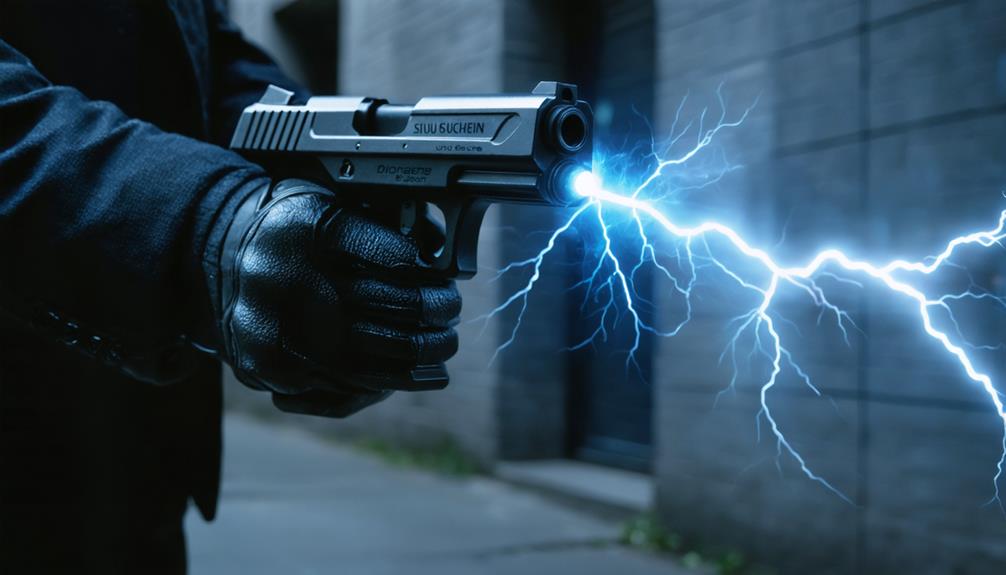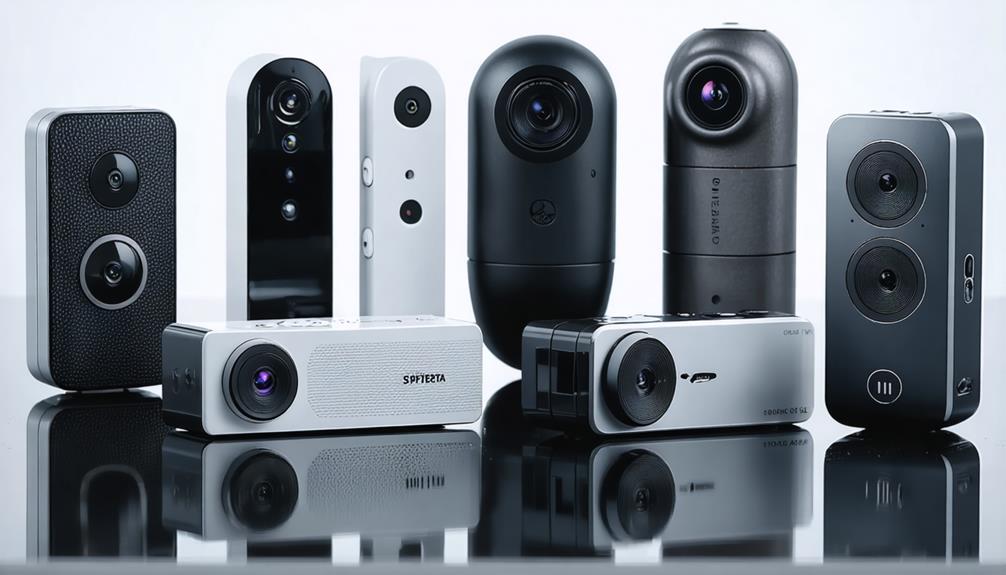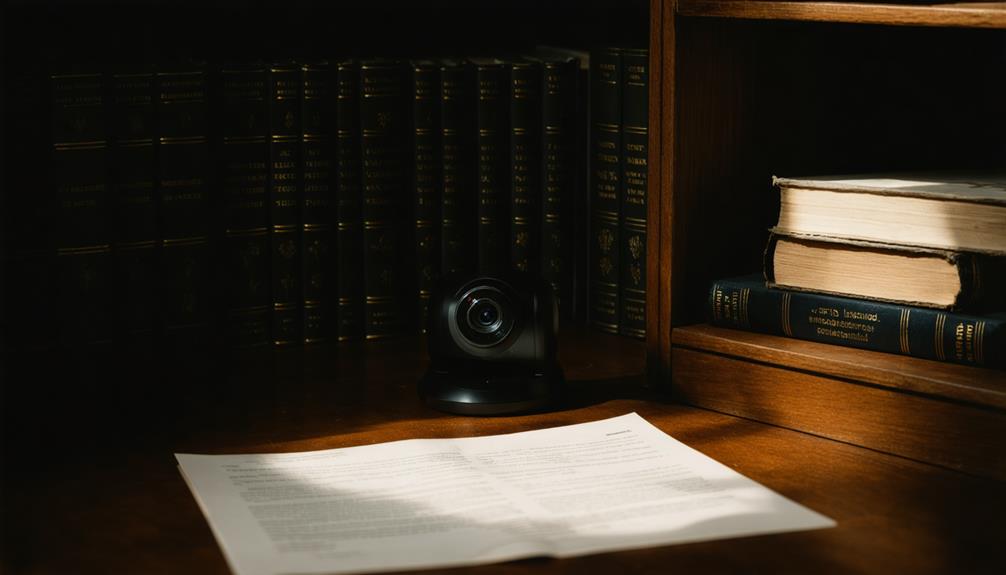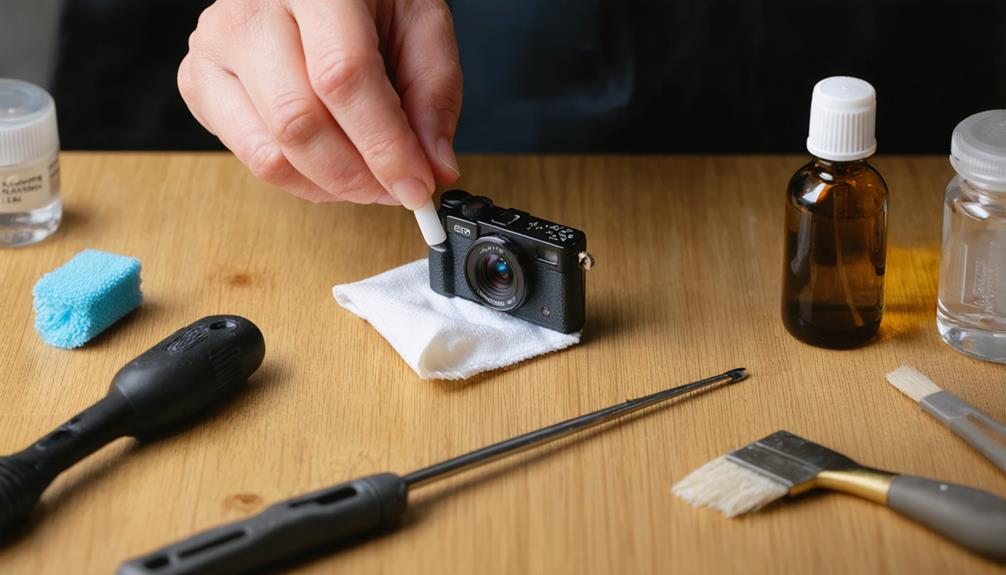
Brainstorm Security Shop

For Orders Over $199

On Any Of Our Products

Details On Refund Page
In the ever-evolving landscape of surveillance technology, small spy cameras with audio have emerged as formidable tools, offering both discretion and efficacy. These compact devices are increasingly sought after for their ability to capture high-quality video and audio without drawing attention, making them ideal for diverse settings such as homes and offices. As we explore the myriad features that enhance their utility—such as motion detection and remote access—we must also consider the ethical and legal implications of their use. What truly sets these devices apart, and how do they balance privacy with security?
Spy cameras offer a range of advantages, making them an invaluable tool for security and surveillance. In the realm of home security, these devices provide homeowners with peace of mind by allowing continuous monitoring of their property, thereby enhancing personal safety. The integration of advanced surveillance technology enables remote viewing, granting real-time access to live footage from virtually anywhere.
While privacy concerns are valid considerations, the benefits of using spy cameras for monitoring pets and providing effective childcare solutions often outweigh these issues.
In professional settings, spy cameras contribute significantly to workplace safety and crime prevention. They serve as deterrents against theft and misconduct, while also aiding in evidence collection when incidents occur. This makes them essential tools for maintaining discipline and accountability within organizations.
Furthermore, the ability to discreetly observe activities ensures that surveillance is both effective and unobtrusive. Despite the potential for misuse, the strategic deployment of spy cameras can lead to substantial improvements in security and safety.
When evaluating small spy cameras, it is essential to focus on key features such as audio quality specification, battery life expectation, and connectivity and compatibility.
High audio quality ensures clear sound capture, which is pivotal for effective surveillance.
Additionally, robust battery life and seamless connectivity with various devices enhance the camera’s usability and reliability in diverse environments.
A pivotal aspect of evaluating small spy cameras is the audio quality specification, which significantly impacts their effectiveness and user satisfaction. The ability to capture clear audio is paramount, as this often forms a critical component of the recorded evidence. Audio clarity ensures that important conversations or sounds are intelligible, providing the necessary detail to accurately assess situations. Furthermore, understanding the sound range is essential; a wider range enables the device to pick up sounds from varying distances, enhancing its utility in diverse settings.
When considering audio quality, it is crucial to examine several factors that contribute to a camera’s performance. These factors can mean the difference between capturing useful audio or missing key details. Below is a table that highlights essential considerations:
| Feature | Importance |
|---|---|
| Audio Clarity | Ensures intelligible and detailed sound capture |
| Sound Range | Captures sounds at varied distances |
| Noise Reduction | Minimizes background interference |
These elements collectively define the audio quality specification, shaping the overall functionality of small spy cameras. Prioritizing these features will not only enhance the camera’s effectiveness but also ensure that users achieve their monitoring objectives with precision and clarity.
Understanding the battery life expectation of small spy cameras is crucial for users who rely on continuous and reliable monitoring. The duration a device can operate without recharging directly influences its effectiveness in capturing necessary footage. Battery usage varies significantly among different models, largely depending on features like video resolution, audio recording, and motion detection. High-definition recordings and continuous operation naturally consume more battery power, necessitating frequent recharges.
When selecting a spy camera, it is essential to evaluate the battery usage in relation to its intended application. For applications that require prolonged surveillance, opting for models with superior battery efficiency—such as those with intelligent power management systems—can minimize downtime.
Additionally, understanding the charging options available is equally important. Many devices offer versatile charging solutions, including USB connections, which allow for easy recharging through power banks or laptops, providing flexibility and convenience during extended operations.
The optimal choice depends on striking a balance between battery life and the specific needs of the user. Ensuring that a spy camera meets these expectations will not only enhance its functionality but also provide users with the peace of mind that their surveillance needs are adequately met.
In the realm of small spy cameras, connectivity options and device compatibility stand as pivotal factors influencing their practical utility and versatility. The integration of wireless technology has revolutionized how these devices communicate with other gadgets. By enabling seamless data transfer, wireless technology allows users to access live feeds and recordings remotely, ensuring that crucial footage is always within reach. This feature is indispensable for users who require real-time monitoring without the hassle of physical connections.
Moreover, device pairing is a crucial element in assessing the compatibility of spy cameras with various platforms and operating systems. Whether pairing with smartphones, tablets, or computers, the ability to connect effortlessly across different devices is essential for ensuring user convenience. Compatibility with popular operating systems like iOS, Android, and Windows enhances the accessibility of these spy cameras, making them adaptable to a broad user base.
When selecting a small spy camera, it is imperative to consider its connectivity protocols and compatibility with your existing devices. A camera that supports robust wireless technology and smooth device pairing can significantly enhance its functionality, providing users with a reliable tool for discreet surveillance and advanced monitoring capabilities.

When considering the best options for small spy cameras, several models stand out in the current market due to their advanced features and reliability. The integration of miniature technology with significant surveillance advancements has led to the creation of highly efficient and discreet devices. These models offer exceptional capabilities, making them suitable for a variety of applications from home security to professional investigations.
One of the top contenders is the Mini IP Camera, known for its high definition video and audio quality. The Spy Cam Pro, another popular choice, features motion detection and night vision capabilities. Additionally, the Button Camera is highly favored for its inconspicuous design, allowing it to blend seamlessly into everyday environments. The Wireless Cube Camera offers the advantage of remote monitoring, while the Pen Camera is ideal for portability and ease of use.
Here is a comparison of some popular models:
| Model Name | Key Features |
|---|---|
| Mini IP Camera | HD video, audio, compact design |
| Spy Cam Pro | Motion detection, night vision |
| Button Camera | Covert design, portable |
| Wireless Cube | Remote monitoring, versatile placement |
| Pen Camera | Portability, easy to use |
These models exemplify the cutting-edge technology available, catering to diverse surveillance needs.
How can you ensure optimal performance from your spy camera right from the start? Effective installation is crucial.
Begin by selecting the right location for your camera placement. Choose a spot that offers a clear view of the area you intend to monitor while remaining discreet. Consider the lighting conditions as well; avoid direct sunlight that can obscure the image quality. For best results, aim for a balance between exposure and concealment.
Audio recording is another critical factor. Ensure that your spy camera is positioned where it can capture sound without obstruction. Avoid placing the camera too close to walls or other sound-blocking elements, as this may hinder audio clarity.
Additionally, test the microphone sensitivity before finalizing the setup to ensure it captures sound adequately from the desired distance.
When installing, ensure the camera is securely mounted to prevent vibration, which can affect both video and audio recording quality. Utilize adhesive pads or mounts specifically designed for small cameras to maintain stability.
Lastly, regularly check for updates or firmware upgrades from the manufacturer to enhance performance and security features.

Given the widespread availability of small spy cameras, understanding the legal and ethical implications of their use is paramount. The proliferation of such devices raises significant privacy rights concerns, as individuals may be recorded without their knowledge or consent.
Consent issues are at the forefront of legal regulations governing the use of these cameras, with many jurisdictions requiring explicit permission from all parties involved.
Ethical implications also come into play, particularly in workplace environments where surveillance could infringe upon employee privacy. Employers must navigate the delicate balance between ensuring personal security and respecting the privacy rights of their staff.
Workplace policies should clearly define acceptable usage, ensuring transparency and adherence to legal standards.
In public spaces, the use of spy cameras for public surveillance must be carefully regulated to protect citizens’ data protection rights. While these devices can enhance security, they also pose risks to individual freedoms if misused.
Therefore, it is essential to establish clear legal frameworks and ethical guidelines to govern their deployment.
Ultimately, the responsible use of small spy cameras necessitates a comprehensive understanding of both legal and ethical considerations, ensuring the protection of privacy and the upholding of individual rights in all settings.
Understanding the legal and ethical landscape surrounding small spy cameras sets the stage for examining the technical aspects of these devices, particularly the choice between wired and wireless options. Wired spy cameras offer several advantages, including consistent power supply and uninterrupted transmission of audio and video signals, which are crucial for prolonged surveillance operations. This reliability ensures that data is captured without the risk of interference or loss due to connectivity issues. Additionally, wired cameras can offer higher-quality audio and video due to their direct connections.
Conversely, wireless spy cameras provide unmatched flexibility, allowing for versatile placement and concealment without the constraints of cables. This adaptability is ideal for scenarios where discretion is paramount, or where installation of wiring is impractical. Wireless cameras also simplify relocation and can be easily integrated into networks for remote access and monitoring.
Below is a table comparing key factors of wired and wireless spy cameras:
| Feature | Wired Advantages | Wireless Flexibility |
|---|---|---|
| Power Source | Continuous power supply | Battery or rechargeable options |
| Installation | Requires wiring | Easy to install |
| Signal Quality | Stable and high-quality | May vary depending on connection |
| Portability | Limited by cables | Highly portable |
| Connectivity | Direct connection | Remote access possibilities |
This comparison highlights the essential considerations for selecting the appropriate spy camera type based on specific needs.

Proper maintenance and care of small spy cameras is paramount to ensuring their optimal performance and longevity. Regular camera cleaning is essential to prevent dust and debris from obstructing the lens, which can compromise image quality. Utilizing a microfiber cloth for lens cleaning minimizes the risk of scratches, while compressed air can be used to remove particles from hard-to-reach areas.
In addition to physical maintenance, keeping the camera’s software up-to-date is crucial. Firmware updates play a significant role in maintaining the camera’s functionality and security. Manufacturers frequently release these updates to fix bugs, enhance performance, and add new features. Regularly checking for and installing firmware updates ensures that the camera operates with the latest improvements and protections against potential vulnerabilities. This process typically involves connecting the camera to a computer or using a mobile application provided by the manufacturer.
Moreover, battery care should not be overlooked. For battery-operated models, it is advisable to fully charge the battery before initial use and avoid letting it completely drain between charges. This practice helps in extending the battery life, ensuring that the camera remains reliable and ready for use when needed.
Accessories can significantly enhance the security capabilities of small spy cameras, providing users with additional functionality and peace of mind. By incorporating various accessory types, users can tailor their surveillance systems to meet specific requirements, thereby achieving optimal security enhancements.
These accessories not only extend the operational range of spy cameras but also improve their overall performance and usability.
Consider the following accessory types that can enhance security capabilities:
The strategic use of these accessories not only maximizes the effectiveness of small spy cameras but also provides users with a comprehensive surveillance solution.
Battery longevity in compact surveillance devices varies based on battery types and energy efficiency. Typically, these batteries can last anywhere from a few hours to several days, contingent on usage patterns and the device’s energy consumption rate.
Detection methods for covert recording devices often involve scanning for signal interference or unusual electronic emissions. Advanced devices can detect these signals, revealing hidden cameras. However, effectiveness varies based on the sophistication of the detecting and recording equipment.
Warranty coverage and return policy are essential considerations when purchasing any electronic device. Many manufacturers offer warranties for small surveillance devices, typically covering defects and malfunctions, with specific return policies varying by retailer and brand.
The typical audio recording range varies based on audio sensitivity and recording clarity. Generally, small devices can capture sound within a 5-10 meter radius. However, higher quality models may extend this range, enhancing audio capture capabilities.
Effectiveness in low-light conditions largely depends on the presence of night vision capabilities. Many devices employ infrared technology to enhance visibility in darkness, allowing for clearer images despite limited ambient light. This technology significantly improves performance in dim environments.
Small spy cameras with audio serve as essential tools in modern surveillance, offering discreet monitoring solutions across various settings. Their benefits include enhanced security through features like motion detection and remote viewing. Key considerations involve understanding legal and ethical boundaries to ensure compliance. The choice between wired and wireless options, along with proper installation and maintenance, further optimizes functionality. By integrating suitable accessories, the overall security framework is strengthened, underscoring the importance of these devices in contemporary safety applications.
